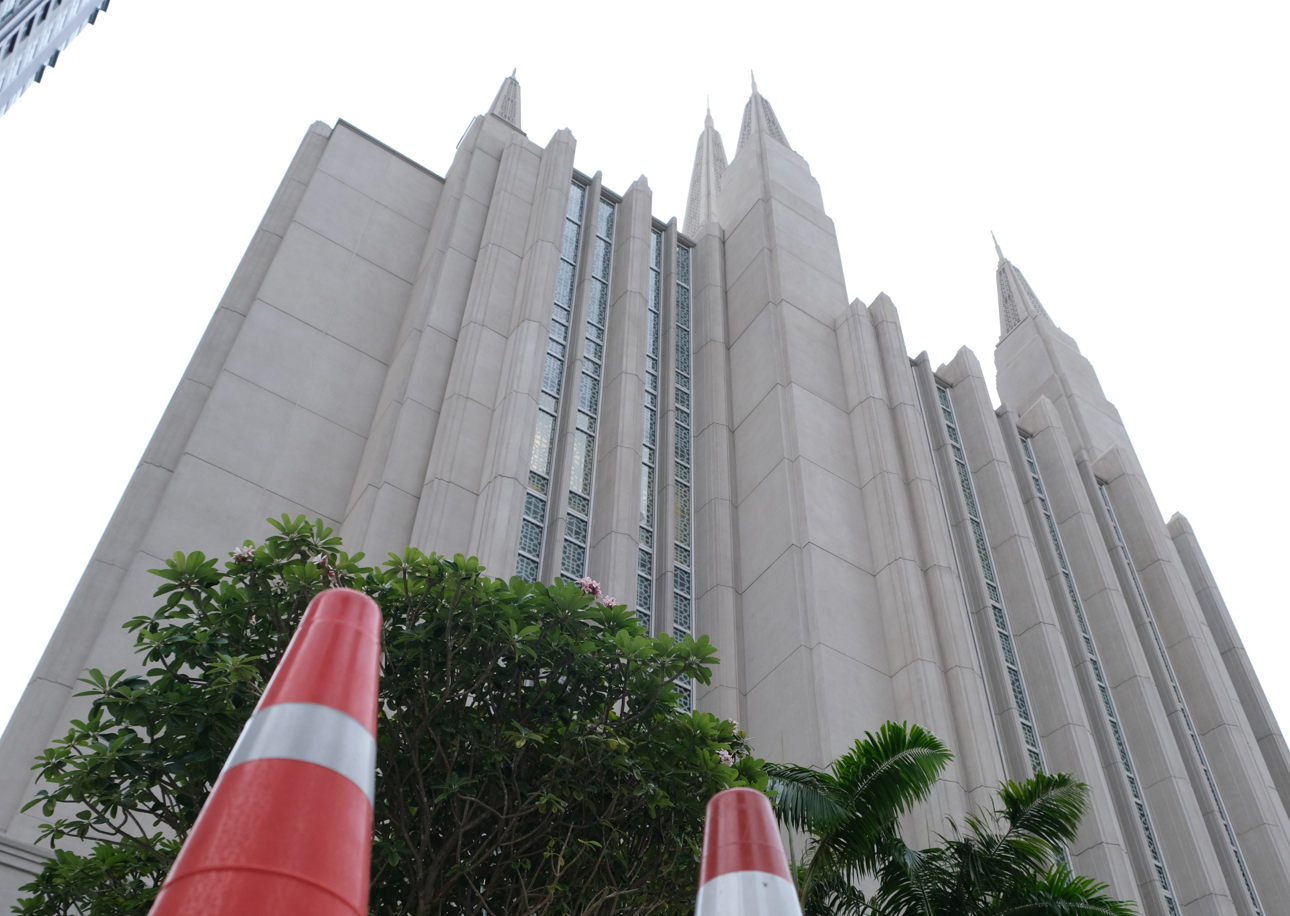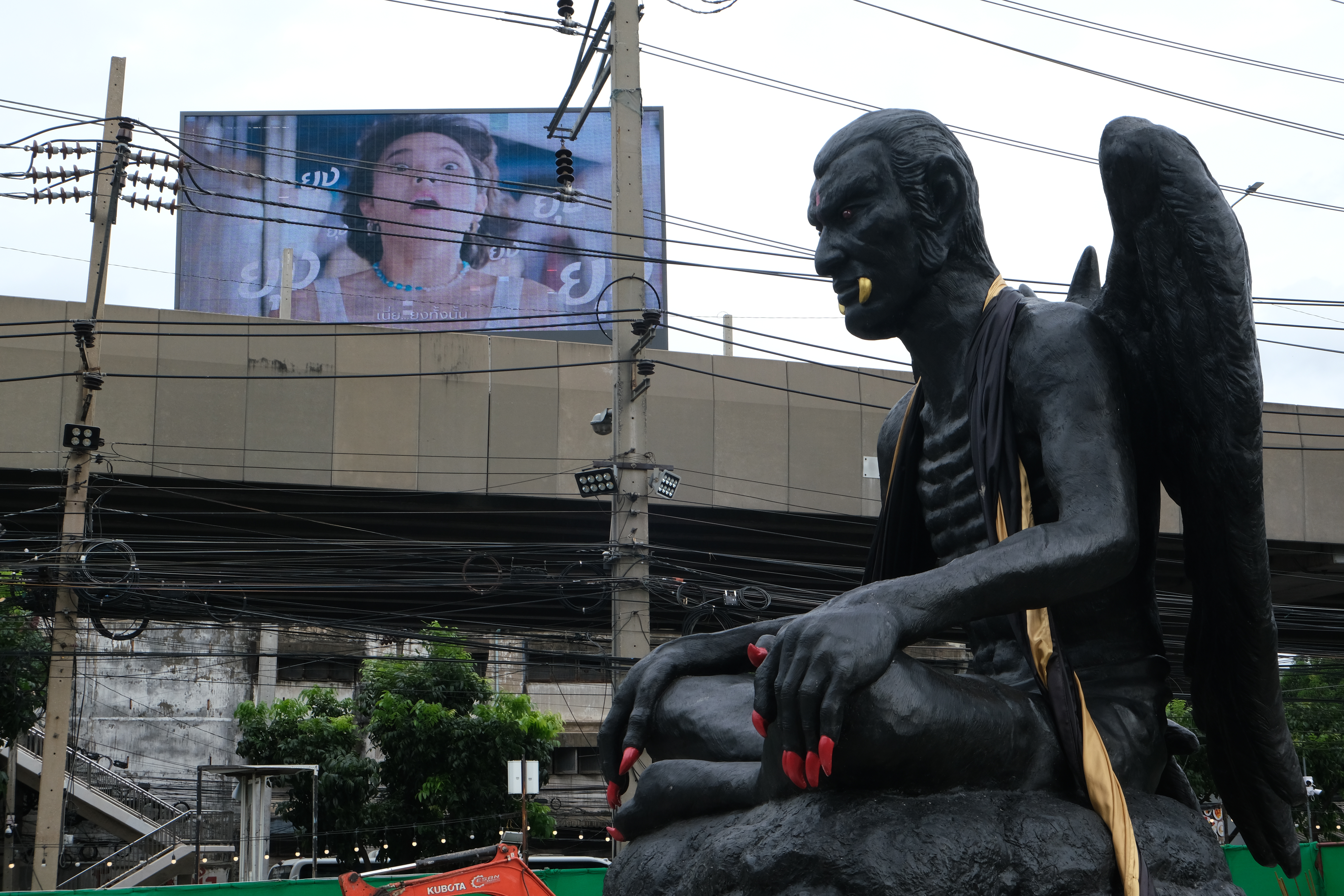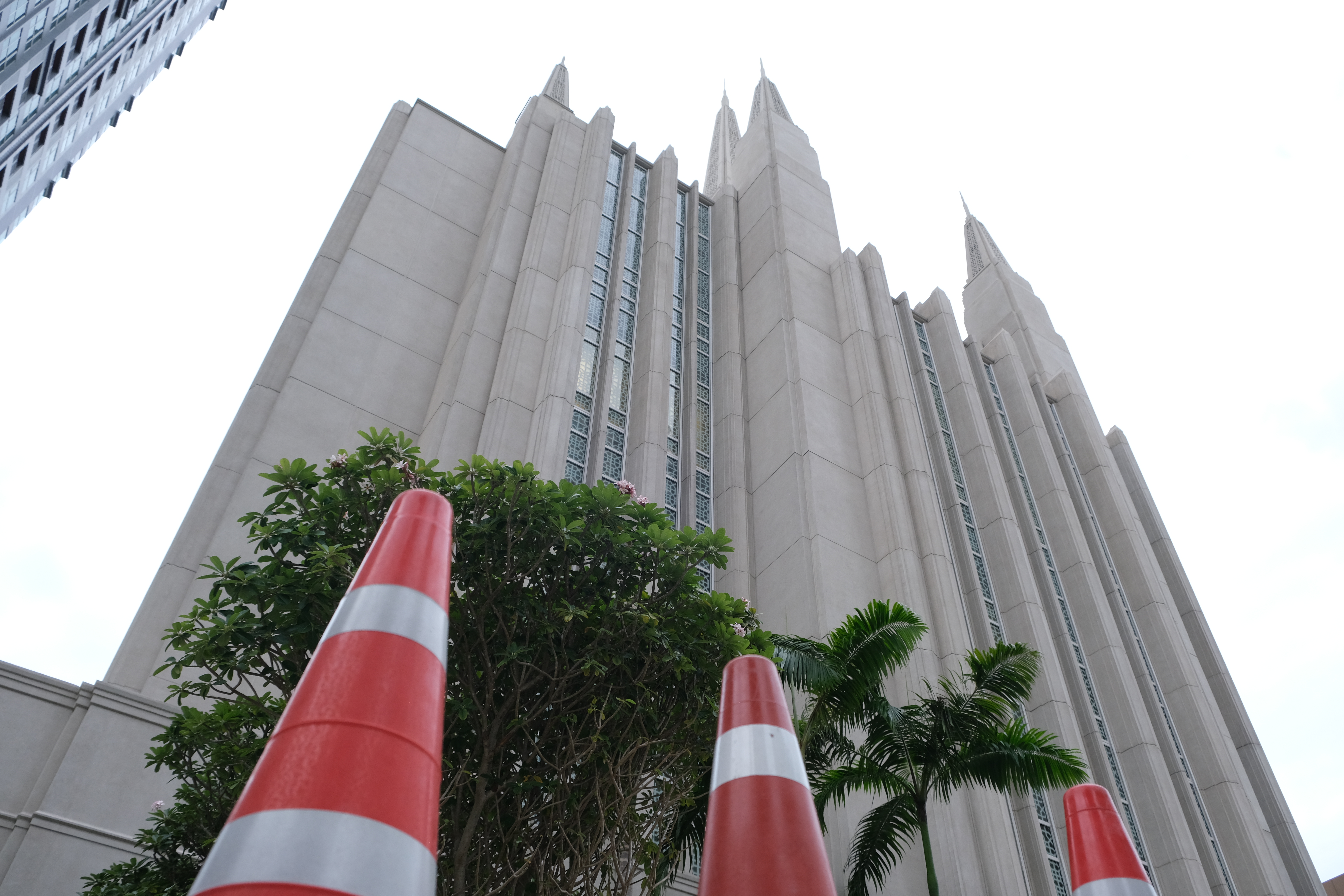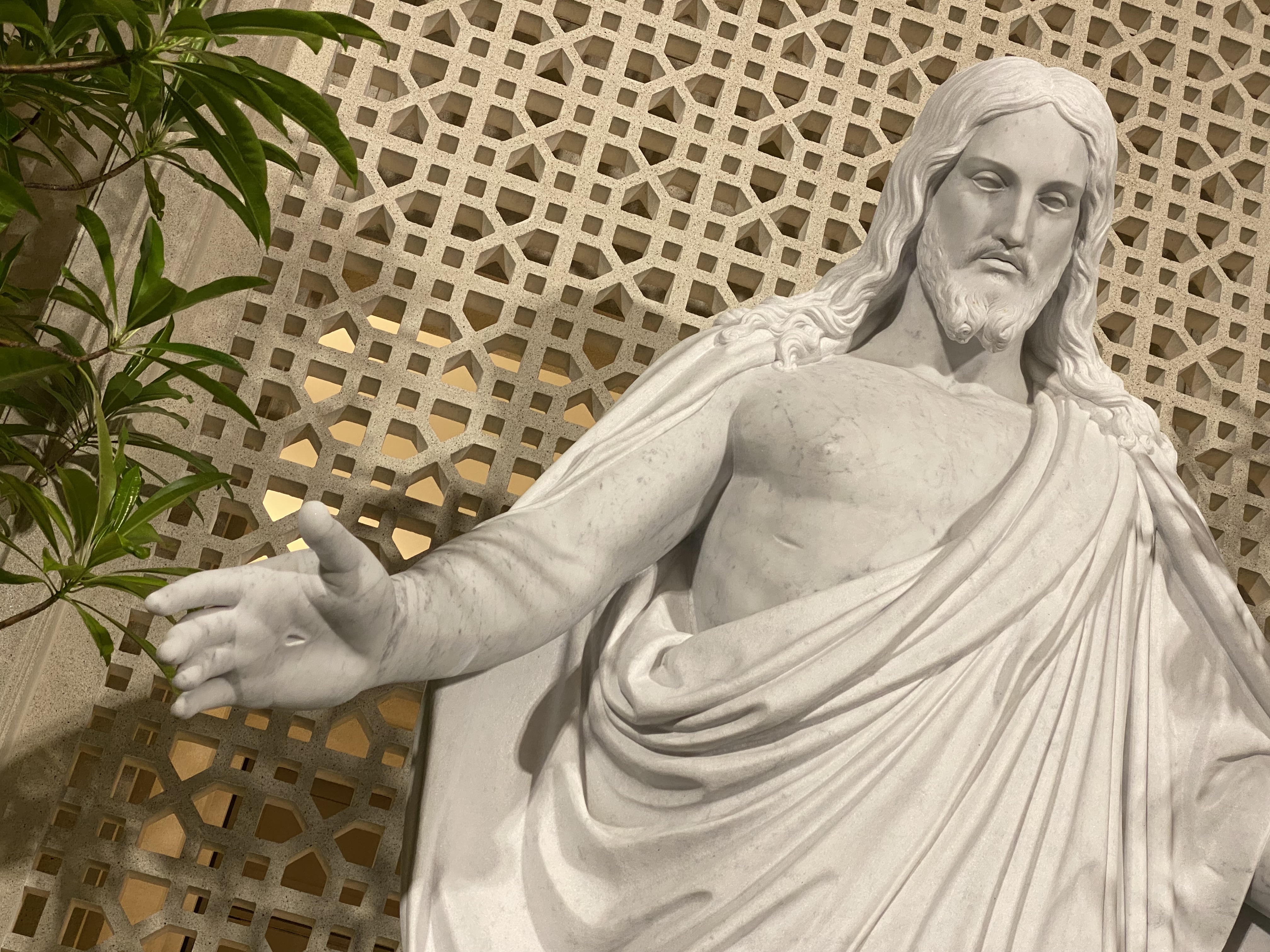A Peek into Thailand’s Hottest Star’s World: 10 Facts You Should Know About Freen
Get an exclusive peek into the world of Freen Sarocha: uncover 10 facts ...

VERY THAI: In a new twice-monthly column, Philip Cornwel-Smith, the author of Very Thai and Very Bangkok, spends an afternoon at two sites of worship: the Khru Kai Kaew shrine and the Mormon Temple. They seem like opposites, yet share a similar predicament – how to fit in.
Bangkok is predominantly Buddhist, but dazzles with its array of other religions and cults. Recently, I spent an afternoon visiting two prominent places of minority worship that hit the headlines: one avowedly black, one self-consciously white. The black shrine to Khru Kai Kaew is deemed too visible, whereas the white Mormon Temple briefly opened its secretive sanctum to strangers. Both face having to explain themselves under Thailand’s tolerant, yet conformist public gaze. They help map the boundaries of belief at a time of widespread angst.
The four-metre-tall bronze effigy of Khru Kai Kaew (Crystal Teacher) first drew attention when it got stuck under a bridge while being trucked to Ratchadaphisek. Social media feverishly speculated about this winged man, all in black save for yellow fangs, red eyes and red nails. Puzzled pundits compared his gaunt, Aryan features to a gargoyle, a sorcerer or the new occult statue of Bophomet in Chiang Mai. Memes and cartoons detected lookalikes among political figures.
The view of Khru Kai Kaew from the altar.
The effigy presides over a religious park at the Bazaar Hotel, featuring a fibreglass gopura from Angkor decked with statuary of Hindu gods and Thai kings. Devotees claim that Khru Kai Kaew tutored Jayawaraman VII, the first Buddhist king of ancient Angkor, though historians dismiss that.
The obscure cult drew protests from pressure groups. The Council of Artists Promoting Buddhism demanded its removal, despite it needing no permission on private land. Alarmed by online images of worshippers with live animals, the Watchdog Thailand Foundation warned worshippers not to sacrifice pets, a charge denied by a relative of the sculptor.
Because the effigy overlooks the Ratchada-Lad Phrao junction, “its scary-looking appearance might frighten passers-by and commuters,” said Bangkok governor Chadchart Sitipunt. He has since got the hotel to shield it from the delicate eyes of passers-by.
Amid the wall construction works, I saw about 30 worshippers pray there. Others photographed from the footbridge. The devotees – male and female, young and older, rich and poor, of various ethnicities – lit five black sticks of incense and left floral offerings, mainly red. Other gilded statues have since been mounted on the surrounding plinths, including the China’s Monkey God and the Nine-Tailed Fox-Queen, a female demon associated with beauty who’s no longer part of rites in China. She would probably be worshipped by women who fear their husbands might stray.
Just as visibly at nearby Huay Khwang intersection, devotees crowding the Ganesha Shrine also worship another statue of Khru Kai Kaew, and make black offerings to the black god of eclipses, Rahu. The Ganesha Shrine also sells vampire-like statuettes of Khru Kai Kaew for home altars.

Khru Kai Kaew is visible from the flyover of a major intersection.
Having survived the all-black deity, I rode the Blue Line to the all-white Mormon Temple, which looms beside Phetchaburi Station. White is pure to Mormons, who erect their steepled temples in a stylistic mix of Gothic, Greco-Roman and Art Deco, as if sculpted out of fondant icing. Ahead of its consecration, the curious and the sceptical flocked to open days in early September, before it closed to outsiders.

The white towers of Thailand’s first Mormon Temple.
Upon entry, devotees put plastic bags over our shoes, so they wouldn’t scuff the plush white carpets. After a PR video with smiles as white as the architecture, there was no proselytising, but their American Third Testament of Christ, The Book of Mormon, was offered free in English or Thai. A visiting Elder from Utah said that the Thai authorities insisted that they not present their beliefs to visitors, but they could answer questions.
Formally called the Church of the Latter-Day Saints (LDS), Mormonism was founded in 1830 by Joseph Smith, who had an epiphany that he was a prophet, then rewrote Christian doctrine around “revelations” that Jesus visited America. Out of 16.8 million Mormons worldwide, about 23,450 live in Thailand, attending local churches. This is their first Thai Temple.
Mormon Temples are modelled on Abraham’s ancient temple in Jerusalem for rites, such as anointing, ordinating, baptism and “sealing” (marriage). Inside, they don white outfits over the white Mormon underwear – compulsory at all times to prevent the baring of arms and legs – which is revered as the “Armour of God.”
Scores of Thai, American and Filipino Mormons patrolled the six storeys as we toured key rooms, like the baptistry and sealing chamber. The holiest sanctuary, the Celestial Room, curiously has no altar or shrine, but believers can ponder the divine from sofas around a giant chandelier shaped, they said, like an upside-down chedi.
The spotless interiors (which we couldn’t photograph), resemble a palace designed by a hotel chain. Vivid paintings of Biblical scenes dot the corridors and rooms, which have Thai motifs in the murals and woodwork. The opulence comes from Mormons donating ten percent of their income to the church. Seen politely dressed in pairs, Mormon youths actually pay to do missionary work as a rite of passage.
The ancestry website Family Search is run from their vast Family History Department in Salt Lake City, Utah, where 40 years ago I failed to find the origin of my surname. They believe that families stay together for eternity, but rule changes mean that divorcées no longer have to endure heaven with their ex, though the LDS exclude LGBT and people who drink coffee. The genealogy is to aid baptising ancestors, “who never had the opportunity in their lifetime,” an Elder explained, adding that the dead could refuse to accept being recruited.

Mormons believe that Jesus visited America.
These black and white sects may seem world’s apart, but they both operate outside the Thai mainstream and there is clearly pressure for them not to be too overt. Yet there is freedom of faith in this obliging land, and it’s hard to draw a line. After all, countless altars have an effigy of Gumarn Thong (the Golden Boy), originally the spirit of a desiccated foetus. Entranced mediums skewer their cheeks with swords. Business blessings involve a real pig’s head. Here every belief has a place.
Many pundits see Khru Kai Kaew as a sign of psychological distress, just as fraught times brought the cults Jatukham Ramathep and Luuk Thep (Angel Doll), a sanitisation of Gumarn Thong. Missionaries historically aroused suspicion, but Thais embraced the advances that missionaries brought, like printing and newspapers. Today’s social contract seems to imply that all this diversity can coexist, but must defer to overarching Thainess. The last word is not “Amen,” but “Sathu.”
This twice-monthly column, Very Thai, is syndicated by River Books, publisher of Philip Cornwel-Smith’s bestselling books Very Thai: Everyday Popular Culture and Very Bangkok: In the City of the Senses. The views expressed by the author of this column are his own and do not necessarily reflect the views of Koktail magazine.
Get an exclusive peek into the world of Freen Sarocha: uncover 10 facts ...
In a cinematic landscape saturated with remakes, reboots and sequels, you might ...
While traditional TV shows are serving us endless boy-meets-girl tales. Thailand has ...
These top 5 barber shops in Bangkok are where gentlemen can elevate ...
Pets, as cherished members of our families, deserve rights and protections that ...
The internet makeup obsession straight out of Bangkok’s streets! Thai makeup zeroes ...
Wee use cookies to deliver your best experience on our website. By using our website, you consent to our cookies in accordance with our cookies policy and privacy policy